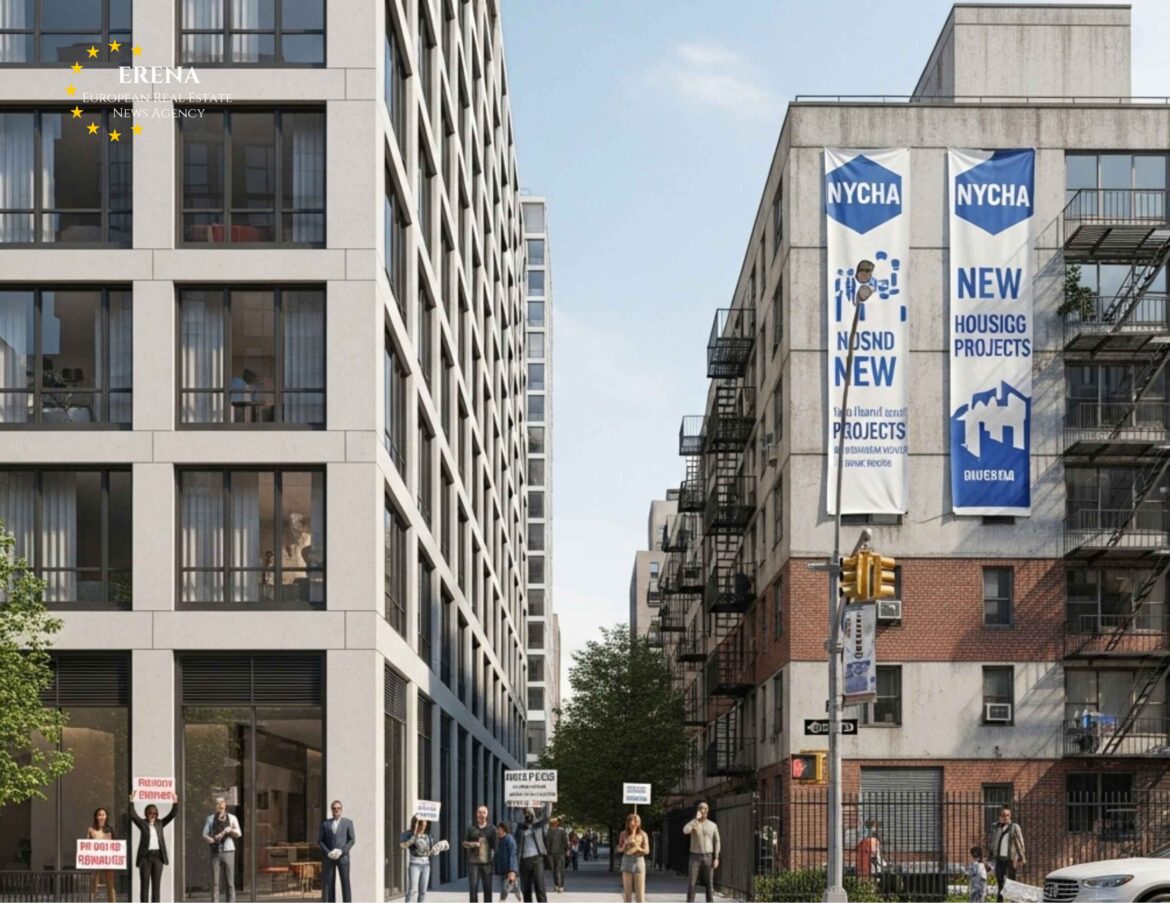A new housing initiative by the New York City Housing Authority (NYCHA) is igniting tensions between city officials and luxury property owners. The controversial plan proposes integrating affordable and mixed-income apartments into some of the city’s most prestigious neighborhoods, including the Upper West Side, Brooklyn Heights, and Long Island City. While the goal is to reduce housing inequality and provide broader access to high-quality infrastructure, many residents of high-end communities are pushing back.
The program, aimed at easing New York’s housing crisis and promoting social integration, has quickly become a flashpoint in the broader debate over urban equity and property values.
Inside the NYCHA Initiative
Dubbed “Affordable Inclusion Zones,” the initiative proposes constructing or converting housing units within high-income neighborhoods where average property values exceed $1.5 million (€1.38 million). The primary goal is to foster inclusive communities where people of all income levels can access quality education, healthcare, public transport, and other amenities.
The plan includes:
- Building new residential units on underutilized NYCHA-owned land.
- Purchasing and retrofitting buildings to include affordable apartments.
- Offering incentives to private developers to allocate 25–35% of units at regulated rent levels.
- Giving priority to low- and moderate-income residents working nearby.
With a projected timeline extending through 2030, the city expects to add over 18,000 affordable units in some of New York’s most desirable zip codes.
Opposition from Luxury Homeowners
Reaction from wealthy homeowners has been swift and critical. Public hearings in several neighborhoods have revealed deep concerns among residents. Key points of opposition include:
- Property value decline: Owners fear that nearby affordable housing could negatively affect luxury real estate prices.
- Strain on infrastructure: Residents worry that an influx of new tenants will overburden schools, public transit, and utilities.
- Safety and quality of life concerns: Some fear that socioeconomic diversity will bring instability or crime, despite lacking evidence.
One Upper East Side co-op board chair said:
“We’re not against affordable housing per se, but integration must happen in a way that respects current residents. Many of us invested millions to live in peaceful, stable neighborhoods.”
City Government Response
Mayor Eric Adams’ administration and NYCHA officials are firmly defending the program, citing urgent structural solutions to a deepening housing crisis. More than 300,000 households are currently on waitlists for regulated rent apartments in the city.
A deputy commissioner for housing stated:
“We can’t keep building affordable housing only in outlying areas. To build a fair city, we must allow people of all income levels to share in the opportunities of every neighborhood. This is not a threat — it’s a chance to grow stronger together.”
Officials also promise:
- Preservation of architectural character in historic neighborhoods.
- Investment in public schools and expanded infrastructure.
- Limitations on density to avoid overcrowding.
Expert Analysis
Experts are split. Urban planners hail the initiative as a progressive step toward inclusive development, while real estate analysts raise concerns about risks to the high-end housing market.
A professor of urban studies at NYU commented:
“Similar programs have succeeded in cities like Paris, London, and Barcelona. Success depends on thoughtful design, community engagement, and long-term integration efforts.”
However, high-end real estate brokers report increasing inquiries from clients looking to relocate or shift investment to other boroughs or out-of-state markets. In some Brooklyn districts, buyer interest has already dipped near designated pilot areas.
Legal and Financial Context
The initiative is backed by mixed funding sources:
- City housing development funds.
- Federal grants via the Department of Housing and Urban Development (HUD).
- Private developer investments, incentivized through tax abatements.
Legally, property owners cannot block the initiative if it complies with zoning and building codes. Still, co-op boards in upscale neighborhoods have started filing collective lawsuits, citing “community disruption,” market devaluation, and inadequate environmental review.
Market Impact
If implemented as planned, the initiative could have broad ripple effects across the real estate sector:
- Luxury segment: In the short term, some areas may see a dip in prices. For instance, the average per-square-foot price in the Upper West Side could drop from $19,500 (€17,900) to around $17,500 (€16,050).
- Mid-tier segment: New investment opportunities may emerge, offering more affordable homes near elite amenities.
- Rental market: Demand for regulated rentals in prime areas is likely to spike, increasing competition for affordable units.
What’s Next
A pilot development in Battery Park City is scheduled for groundbreaking in July 2025. If successful, the program will expand rapidly into other high-income districts.
Meanwhile, the City Council is debating amendments to zoning laws aimed at smoothing the integration of mixed-income developments into existing neighborhood fabrics.
Conclusion
The clash between luxury homeowners and NYCHA’s new housing initiative goes beyond a local zoning issue — it reflects a larger struggle over the right to the city and the balance between public good and private wealth. In a city where economic divides are growing, finding a model that fosters inclusion without alienating communities is a formidable challenge.
Whether a compromise can be reached depends on how effectively the city can involve stakeholders, address planning concerns, and maintain transparency throughout the process. Regardless, NYCHA’s initiative marks a bold precedent in urban policy and could shape the next decade of housing in New York.

